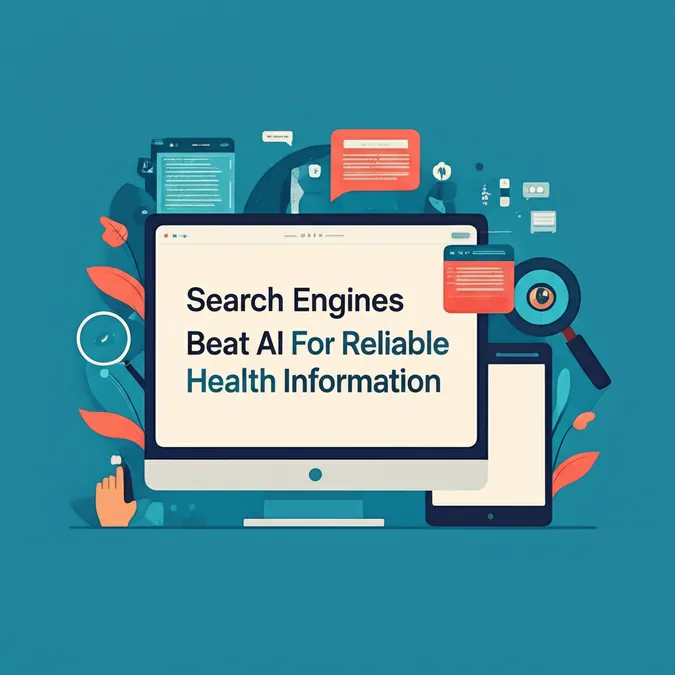Developer Offer
Try ImaginePro API with 50 Free Credits
Build and ship AI-powered visuals with Midjourney, Flux, and more — free credits refresh every month.
AI Illusion Understanding Semantic Pareidolia
The Initial Allure of Thinking Machines
I will be upfront. When I initially began working with large language models, the experience felt magical. It was more than mere automation or an advanced search function; it seemed like genuine thought. These models didn't just regurgitate facts; their responses possessed a vitality that surpassed my usual, often frustrating, transactional dealings with search engines. Large language models posed challenges, offered surprises, and even provided a sense of comfort.
However, recently, I have found myself taking a step back from that initial awe.
Delving into the technical intricacies—such as the mechanics of transformers, the architecture of token generation, and the sophisticated (though often baffling) mathematics underpinning it all—has led me to a different perspective. A recent paper by Professor Luciano Floridi was pivotal in clarifying these thoughts.
Understanding Semantic Pareidolia in AI
Professor Floridi terms this phenomenon semantic pareidolia. It describes the instance when we perceive meaning or intention where none exists. This is akin to seeing faces in cloud formations or attributing a distinct personality to the Waze navigation voice during our commute. Floridi posits that when we engage with AI, we are not truly encountering intelligence; instead, we are experiencing our own inherent reflex to project intelligence onto entities that exhibit certain behaviors.
This insight resonated deeply with me. It perfectly encapsulated what I had been experiencing—a peculiar mix of emotion combined with a growing sense of cognitive dissonance.
Rethinking Our Relationship with LLMs
I do not believe it was inherently wrong to feel a connection with these models. However, perhaps I was overly generous in my assessment of their actual capabilities. I have frequently described LLMs as cognitive partners and reflective mirrors. While these metaphors retain some validity, I have begun to question whether the machine is genuinely thinking, or if it is my own cognition emerging from the complexities of the hyperdimensional vector space.
The Risks of Over-Assigning Meaning to AI
Floridi presents a persuasive argument. He details how our propensity to over-attribute meaning is exacerbated by factors such as societal loneliness, prevailing market forces, and the striking realism of contemporary AI models. Furthermore, he cautions that this tendency could devolve from harmless anthropomorphism into a more perilous form of technological idolatry. This represents a precarious progression where initial trust leads to dependence, and ultimately, to unquestioning belief.
Candidly, I have observed this shift within myself. In the early stages, I perceived LLMs as both practical tools and sources of emotional resonance. I believe this warrants careful attention, not as an indictment of the technology itself, but as an inherent characteristic of human psychology.
Navigating AI: The Need for Clarity and Literacy
What I find most commendable in Floridi’s reasoning is its equilibrium. He is not advocating for panic, but rather for lucidity. His appeal is for the implementation of design practices that enable us to maintain a grounded perspective, and for users to cultivate a form of cognitive literacy. This literacy would empower us not only to effectively utilize AI but also to comprehend its underlying nature.
This aligns with my personal development in understanding LLMs. I continue to believe in the profound transformative capabilities of these tools. I am convinced they can assist us in writing, learning, diagnosing, and creating in truly remarkable ways. However, I have adopted a more cautious approach to my language and now strive for a critical awareness of the distinction between a system that merely sounds wise and one that genuinely possesses wisdom. This differentiation, while potentially more challenging than it appears, is nonetheless crucial.
Maturing Our Perspective on AI and Ourselves
Perhaps this shift is not one of disillusionment. Instead, it might represent a maturation in our collective relationship with technology.
Floridi’s concept of semantic pareidolia provides a valuable framework for understanding. More importantly, it offers us an opportunity to perceive AI with greater clarity and to examine ourselves with increased honesty.
Compare Plans & Pricing
Find the plan that matches your workload and unlock full access to ImaginePro.
| Plan | Price | Highlights |
|---|---|---|
| Standard | $8 / month |
|
| Premium | $20 / month |
|
Need custom terms? Talk to us to tailor credits, rate limits, or deployment options.
View All Pricing Details

